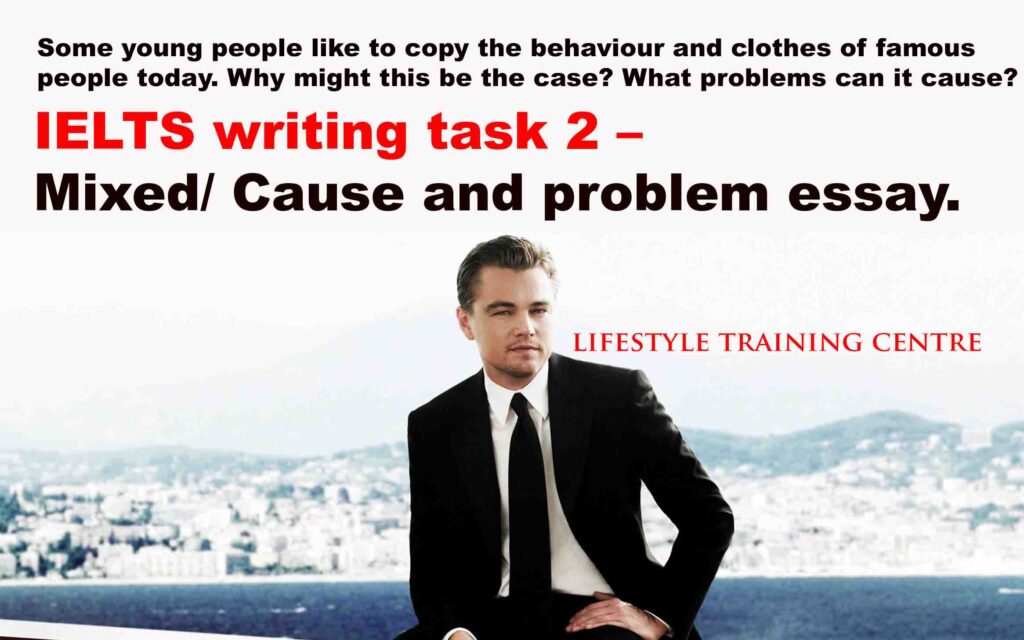
Model answer by Lifestyle Training Centre
Young people often find themselves greatly influenced by individuals they admire, often mirroring not just their behaviour but also their fashion choices. This essay explores the underlying reasons for this trend and its potential consequences.
There are myriad reasons why youth emulate esteemed personalities, primarily driven by the belief that by imitating successful figures, they too can achieve similar success and prosperity. This phenomenon extends beyond mere imitation of actions to adopting the very style and mannerisms that epitomise these revered individuals. A prime example is the global emulation of figures like Leonardo DiCaprio, where young people emulate his dress sense and lifestyle choices.
While imitating successful individuals is not inherently negative, it carries significant risks. For instance, it’s unrealistic for average individuals to sustainably mirror the lavish lifestyles and exquisite wardrobes of their idols without substantial financial resources. This could inadvertently push young people towards financial dependency on their families or even towards illicit means of acquiring wealth. Moreover, many celebrities harbour darker aspects of their lives, including substance abuse or involvement in immoral behaviours such as verbal and sexual misconduct. Blindly following these aspects can lead youngsters into irreversible situations.
In conclusion, while it’s natural for young people to be inspired by accomplished individuals, they must exercise caution in their emulation. Focusing solely on positive attributes can serve as a powerful motivation towards personal growth and success. However, overlooking the potential pitfalls of blind imitation can lead to financial instability, involvement in criminal activities, or even the adoption of harmful habits. Therefore, it is imperative for youth to choose role models wisely, ensuring they emulate traits that contribute positively to their own development and society at large.
List of vocabulary used
1. Emulate: To imitate or follow as an example.
2. Admiration: Respect and approval for someone.
3. Behaviours: Actions or conduct.
4. Dress codes: Specific styles of clothing.
5. Idols: People admired and emulated.
6. Rationales: Reasons or explanations.
7. Trend: General direction in which something is developing or changing.
8. Ramifications: Consequences or results of actions.
9. Plagiarised: Copied or imitated without authorization.
10. Eminent: Distinguished or famous.
11. Paragon: Perfect example or model of something.
12. Stature: Status or position achieved in society.
13. Luxurious: Extremely comfortable or elegant, often associated with wealth.
14. Exquisite: Extremely beautiful or carefully selected.
15. Credulous: Willing to believe or trust too readily, often without proper evidence.
16. Financial crises: Situations involving severe financial difficulties.
17. Involvement: Participation or engagement in something.
18. Dark sides: Negative or hidden aspects.
19. Substance abuse: Misuse of drugs or alcohol.
20. Immoral: Contrary to accepted principles of right and wrong.
21. Scrutinise: Examine or inspect closely.
22. Role models: People looked up to as examples to emulate.
23. Motivation: Reason or incentive for action.
24. Development: Growth or progress.
We hope this information has been valuable to you. If so, please consider a monetary donation to Lifestyle Training Centre via UPI. Your support is greatly appreciated.

Would you like to undergo training for OET, PTE, IELTS, Duolingo, Phonetics, or Spoken English with us? Kindly contact us now!
📱 Call/WhatsApp/Text: +91 9886926773
📧 Email: [email protected]
Visit us in person by following the directions on Google Maps. We look forward to welcoming you to the Lifestyle Training Centre.
Follow Lifestyle Training Centre on social media:
Thank you very much!